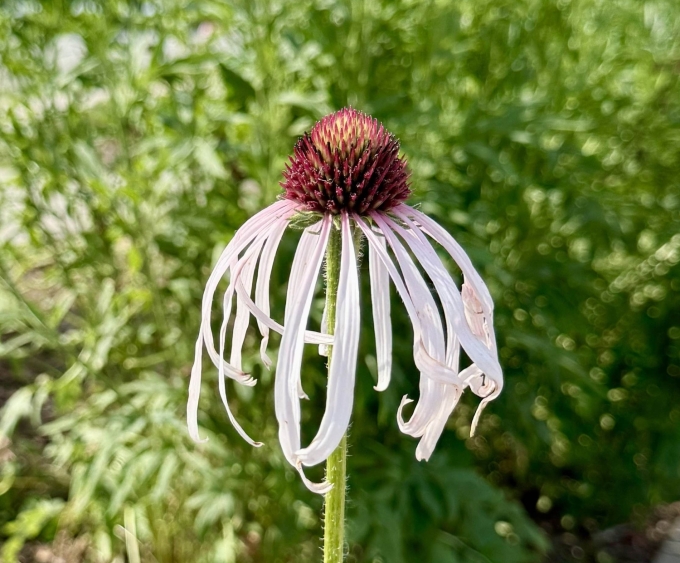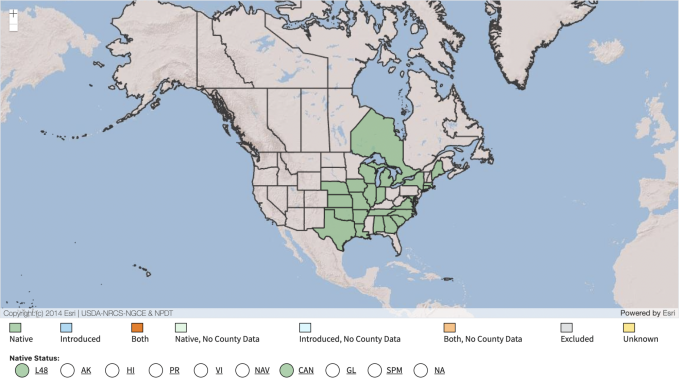Common Name: Pale Purple Coneflower
Family: Asteraceae
Plant Type: Herbaceous Perennial
Hardiness Zones: 3–8
Height: 2.0 to 3.5 feet
Spread: 1.0 to 1.5 feet
Bloom Time: May to July
Bloom Description: Pale pink to lavender drooping petals with a spiny orange-brown cone
Sun Exposure: Full sun
Water Needs: Dry to medium
Soil Preference: Well-drained; thrives in sandy, rocky, or loamy soils
Management Level: Low
Suggested Use: Prairie gardens, pollinator beds, naturalized areas
Attracts: Bees, butterflies, hummingbirds, goldfinches
Tolerates: Drought, heat, dry soils, deer
Notable Features: Narrow, drooping petals; early-season bloom; strong taproot
Native Range: Central United States, including Nebraska; found in dry prairies, glades, and open woods.
Nebraska Growing Notes:
Echinacea pallida is a true Great Plains native, well-adapted to Nebraska’s dry prairies and sandy hills. It blooms earlier than Echinacea purpurea and is distinguished by its soft, narrow, reflexed petals. Its deep taproot ensures drought tolerance and long-term persistence, even in poor or rocky soils.
This species is an excellent pollinator plant and adds elegance and texture to native-inspired or low-maintenance gardens.
Landscape Use:
Ideal for prairie restorations, xeric plantings, native borders, and pollinator-friendly beds. Combines well with grasses like little bluestem, butterfly milkweed, and blazing stars.
Caution:
Avoid overwatering or rich, heavy soils, which can cause legginess. May reseed lightly in favorable conditions.
Garden Locations:
Bed(s) 4, 5, 7, 9
Sources:
https://plants.usda.gov/plant-profile/ECPA
https://www.missouribotanicalgarden.org/PlantFinder/PlantFinderDetails.aspx?kempercode=c570


